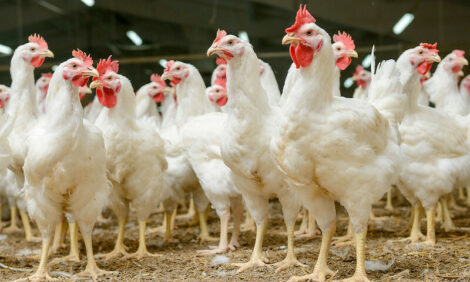



Poultry Sector Reaches Record Production of Two Million Tonnes
ARGENTINA - Industry Minister Debora Giorgi said that Argentina is on track to become, in the short term, the fourth largest producer of poultry meat.According to the Industrial Strategic Plan 2020, the sector has achieved, in less than a decade, exports of 600,000 tonnes per year.
From 2003 to the present, poultry production has tripled, per-capita consumption has doubled and exports are up 10-fold from 65 to 650 million US dollars.
Today, Argentina is the ninth largest producer of poultry meat, producing 1.6 million tons. According to industry estimates, more than 90,000 tonnes were produced in 2011, reaching a record two million tons this year.
"We are on track to be the fourth largest producer of poultry meat,within a few years," said Ms Giorgi.
She also emphasised that Argentina "is the sixth largest exporter of poultry meat and sells to over 60 countries", for one, so far this year already exported 356,000 tonnes, 100,000 of which were destined to Venezuela.
In 1970 it took 2.8 kilos of balanced food for a kilo of chicken and 75 days for a broiler chicken of 2,500g. In 2010, two kilos of food was required to do the same balanced kilo of chicken and 46 days for a broiler chicken of 2,760g. Since the incorporation of technology in the production chain, by 2017 producers are going to need just 1.7 kilos of food and 38 days for a broiler chicken of 2,800g.
Sector Data
Argentina has a level of domestic consumption of 40 kilos per capita per year, which mobilises investment in the sector to increase capacity and production. The forum, Poultry Industry Strategic Plan 2020, agreed to target consumption of poultry meat in the country of 50 kilos per capita per year, producing 3.1 million tonnes (91 per cent more than in 2010), generating 50,000 jobs to achieve the 200,000 workers in the sector and export 600,000 tons per year.
Every ton of corn and soybeans exported by Argentina means an average income of US$620. In the poultry sector that same ton processed into chicken can generate foreign exchange between $2,300 and $2,900 if it is exported as cooked chicken.
This means that poultry processsing increases by between 270 and 370 per cent the foreign exchange earnings of one ton of grain compared to its export as a commodity.
The sector also adds value to export, through quality and technology to process the meat end with the best performance.
Argentina registered a steady growth since 2003, going from 300 million head of poultry slaughtered to more than 700 million in 2011, while consumption of poultry meat in the period 2003-2011 increased from 18 to 39.5kg per capita.
Meanwhile, exports grew at an average rate of 37 per cent per year and currently reach more than 60 countries.








